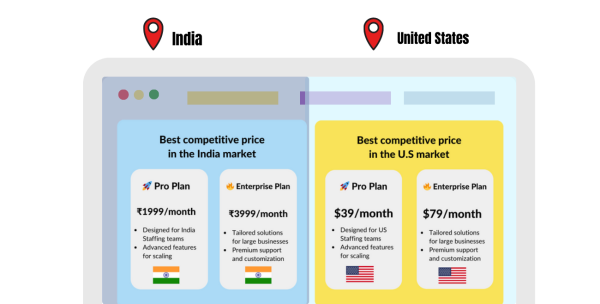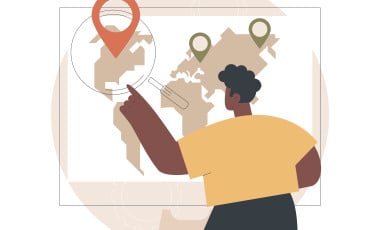6 Practical Website Personalization Examples: How SMEs Can Leverage Personalization for Better Engagement
How consumers access the digital world has changed dramatically, from a simple, predictable path to a complex, ever-changing maze full of micro-moments. These small moments present opportunities for businesses to capture the attention of consumers and engage with them on a personal level. To successfully navigate this new journey, website personalization examples are the key. By tailoring the online experience to the individual user's needs, businesses can increase engagement and drive conversion.
Micro-Moments
Previously, a consumer's online journey was visualized as a straight path - from discovery to consideration, decision, and purchase. This model has been disrupted. With the proliferation of smartphones and the omnipresent internet, consumers can spontaneously decide to search, shop, or learn about a product or service. These quick, impulsive decisions are termed 'micro-moments', a concept introduced by Google in 20111
Such moments are fleeting but critical. A consumer might decide to look up the benefits of a product, compare it with alternatives, or seek reviews – all in the span of a few minutes. Businesses must recognize and adapt to this non-linear user journey, where every interaction counts, and the competition is always just a click away. The more your touchpoints can engage with the user, the better your chance of winning the deal; offering a personalized experience to the visitor is important in driving engagement.
The Power of Website Personalization
Website personalization is more than just a marketing strategy; it's a dynamic tool that intercepts users during their micro-moments. By understanding and anticipating user intent, businesses can present tailored content that resonates, increasing the likelihood of engagement and conversion.
Website Personalization and SME Websites
While many assume website personalization to be a luxury tailored only for major corporations, it's a potent tool that SMEs can harness to capitalize on micro-moments. By considering it not as an overwhelming venture but rather as a journey that can be started with simple steps, SMEs can progressively enhance their users' experience. Here are six manageable strategies with examples to begin the personalization journey.
Exploring Website Personalization Examples: Six Manageable Strategies to Begin the Journey
1. Progressive User Experiences Based on Visitor Persona
Tailoring a visitor's online journey according to their identified persona and position within the sales or engagement funnel can create an impactful and resonant user experience. By analyzing the previous steps a user has taken - whether they've browsed products, read reviews, or engaged with content - businesses can predict the next logical step in their journey. For instance, if a user has previously browsed several products but hasn't made a purchase, they might benefit from a personalized recommendation or a limited-time offer. Conversely, if they've been consuming informational content, the next step might involve presenting a detailed guide or a webinar sign-up. By providing these persona-specific pathways, businesses ensure that every visitor finds a route that feels personally tailored, enhancing engagement and deepening brand loyalty.
2. Geo-specific Solutions

Businesses can offer more relevant solutions by understanding the unique challenges and needs of users based on their geographic location. This might involve highlighting regional solutions or adapting communication to resonate more effectively with local sentiments and cultures.
3. Referral-driven Content Adaptation
Recognize the source from which a visitor arrives at your site, be it a search engine, business listing, social media, or an industry-specific referral website. This insight allows businesses to tailor content that speaks directly to the context or interests implied by the referral source. Instead of presenting generic information, businesses can curate a more aligned experience, resonating with the visitor's immediate needs or curiosity.
4. Valuing Long-term Relationships
It's essential to acknowledge and understand the evolving challenges of returning visitors. By recognizing and addressing the shifting needs of loyal customers, businesses can foster deeper relationships and provide ongoing value.
5. Aligning Web Content with Email Prompts
When a user clicks through from an email campaign, it's essential to ensure a seamless experience by aligning the website content with the email's message. If they've shown interest in a specific topic or promotion highlighted in the email, the corresponding webpage should delve deeper, offering information or solutions that mirror the email's theme. This cohesive journey not only reaffirms the user's decision to engage but also enhances the relevancy of their on-site experience.
6. Contextual Solutions Post-Ad Click
When users land on a site following an ad click, they arrive with a particular context or need in mind. Instead of broadly highlighting the product or service, businesses should show tailor-made content on how it solves the specific challenge or query implied by the ad. This alignment with the user's initial intent ensures a cohesive journey, fostering a sense of understanding and significantly boosting the potential for genuine engagement.
A personalized experience implicitly communicates that a business values its consumers. When users feel understood and catered to, they're more likely to return and even advocate for the brand.
Best Practices for Effective Personalization
When done right, personalization can elevate customer satisfaction, drive loyalty, and maximize engagement. However, striking the right balance is essential. Too much can feel invasive, while too little can seem impersonal. The following best practices will help organizations offer the best possible experience to their visitors.
- Understand and connect with your users on an emotional level. Wherever possible, prioritize human interactions, especially in critical customer service roles.
- Offer users the autonomy to define their personalization experience. This includes options to adjust, limit, or opt out of specific personalized content or notifications.
- Strive for subtlety in personalization. It's essential to find the balance between being helpful and intrusive. Avoid over-personalizing to the extent that users feel monitored or under surveillance.
- Be cautious about overwhelming users with repetitive reminders or notifications. Bombarding users with constant alerts about items they viewed or added to their cart can be counterproductive.
- Regularly gather feedback about the personalization experiences from your users. Implement changes based on this feedback to demonstrate that you value their opinions and insights.
Looking to the Future
Adapting to the non-linear nature of the user journey is not merely a trend; it's a necessity. As technology continues to evolve and integrate deeper into our daily lives, these micro-moments will only multiply. With voice search, augmented reality, and other innovations on the horizon, the ways consumers engage with online content will diversify even further. These multiplying micro-moments will necessitate businesses, especially SMEs, to be even more responsive.
Facing the future means identifying these moments and ensuring that content can be personalized in real time. Tools powered by AI, predictive analytics, and instant data processing will become essential. For SMEs, the journey might start small, but with the right strategies, they can achieve big results.
We have implemented the personalization system mentioned in this article on our website and are actively testing it on other portals. A demo of website personalization capabilities is available for your reference. If you are interested in trying this out on your website, let us know.



